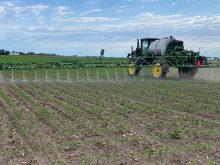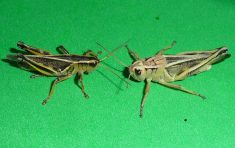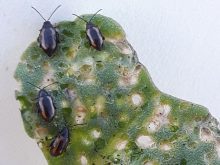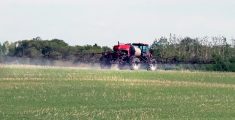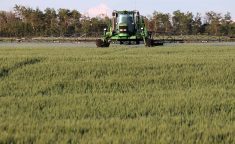The farmer is behind on spraying. It’s dead calm. Leaves are still. The sprayer is filled, ready to go. He climbs down from the cab and heads to the house for a nap.
Something’s wrong with this scene. There’s spraying to be done and conditions couldn’t be better, so what is going on?
Government extension workers, chemical companies and spray specialists have spent decades preaching that farmers can prevent drift if they spray in the evening and early morning when it’s calm. Is this not true?
Read Also

Phosphate prices to remain high
Phosphate prices are expected to remain elevated, according to Mosaic’s president.
It is true, but it turns out that those so-called “ideal” conditions may not be so ideal after all. Conditions that seem perfect for pesticide application can actually be the best conditions to also cause spray drift.
It has to do with temperature inversion, a subtle condition that fools us into thinking that no wind is the same thing as no drift danger, according to Jason Deveau, an application technology specialist with the Ontario agriculture ministry.
“Spray experts traditionally told us to spray first thing in the morning or in the evening when it’s calm. It seemed so logical. If a lot of wind was bad, then no wind must be terrific, right?” said Deveau.
“No. Absolutely wrong. Zero wind indicates you may be in a strong thermal inversion. Spray drift caused by an inversion is practically imperceptible. That’s why a little bit of breeze is better than no breeze.”
Deveau said a thermal inversion is a situation in which colder air next to the ground does not mix with the layer of warmer air above it. The normal convection process has halted.
“We’re all standing in a lava lamp of bubbling air, normally. Air is continually percolating in convection cells all around us,” he said.
“Bubbles of warm air rise and displace colder air that falls. It stirs the air. It disperses and dilutes particles and odours and other airborne substances such as pesticide products. But when you’re in a strong thermal inversion, that stirring action doesn’t occur. So anything that’s already suspended in that cold layer at the ground remains trapped. It has nowhere to go. Concentrated products like pesticides don’t become dispersed like they normally would.”
Deveau said only three things can cause those suspended particles to move away or dissipate in an inversion:
- If the farmer is lucky, convection will get going again with heat from the sun so that air starts to bubble up and down. All the ingredients trapped next to the surface start to dissipate broadly over a wide area in non-harmful manner.
- If not so lucky, that slab of nasty air will flow like water, slowly finding its way downhill, even if it seems like a perfectly flat field.
- If the wind picks up at the right time, it will push that slab laterally and nobody knows where it will end up. It can travel for kilometres in any direction, moving not only vapour but also droplets of mist.
“When you read the labels, you see that many of them tell you to never spray during a thermal inversion,” he said.
“Some labels in the States say do not spray if a thermal inversion is anticipated within 24 hours before you’re done spraying. If you do, you’re off label.”




